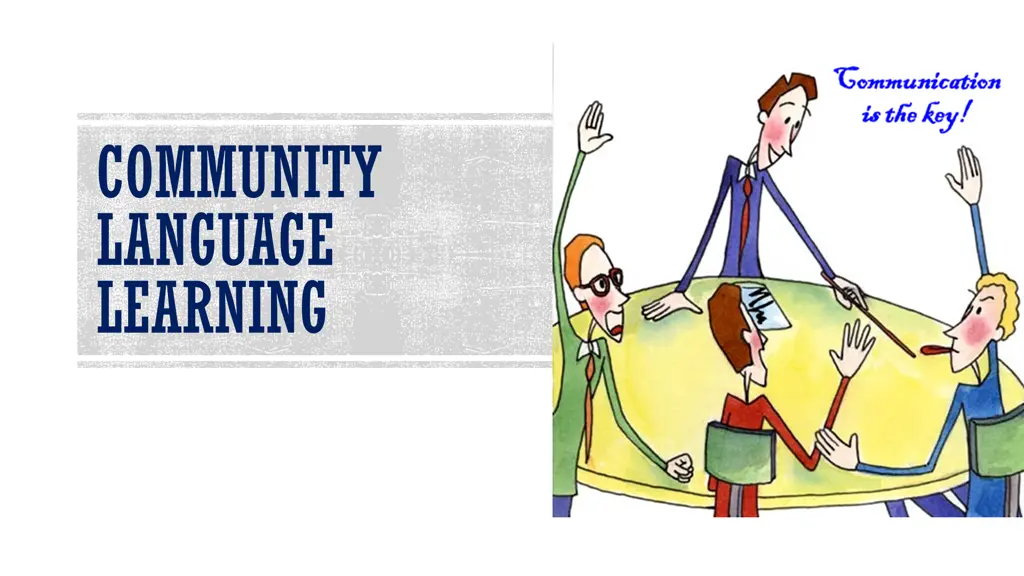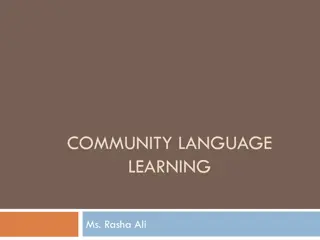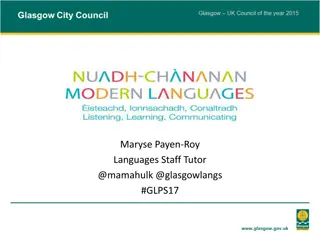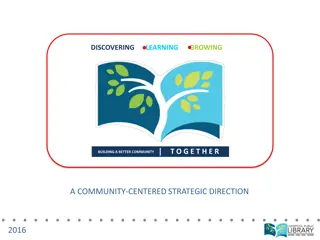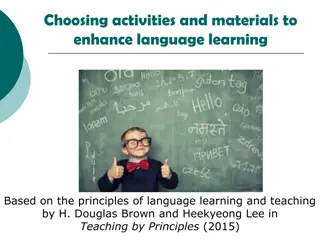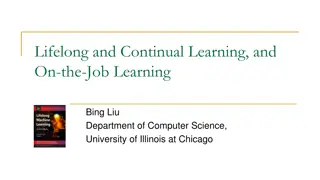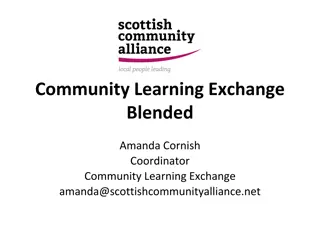Community Language Learning
Community Language Learning (CLL) involves collaborative language learning where teachers act as counselors and learners work together. CLL teachers aim to teach communicative language skills, foster self-learning, and mutual learning among students through valuing thoughts and feelings. Popular
Download Presentation

Please find below an Image/Link to download the presentation.
The content on the website is provided AS IS for your information and personal use only. It may not be sold, licensed, or shared on other websites without obtaining consent from the author. Download presentation by click this link. If you encounter any issues during the download, it is possible that the publisher has removed the file from their server.
E N D
Presentation Transcript
COMMUNITY LANGUAGE LEARNING
Community language learning (CLL) is a language- teaching approach in which students work together to develop what aspects of a language they would like to learn. It is developed by Charles A. Curran, in which the teacher acts as a counselor while the learner is seen as a client and collaborator...
WHAT ARE THE GOALS OF TEACHERS WHO USE THE COMMUNITY LANGUAGE LEARNING METHOD? Teachers who use CLL want their students to learn how to use the target language communicatively. In addition, they want their students to learn about their own learning, to take increasing responsibility for it, and to learn how to learn from one another. All of these objectives can be accomplished in a non-defensive manner if the teacher and learner(s) treat each other as whole persons, valuing both thoughts and feelings.
WHAT IS THE ROLE OF THE TEACHER? WHAT IS THE ROLE OF THE STUDENTS? The teacher s initial role is primarily that of a counselor. he learners are very dependent upon the teacher. It is recognized, however, that as the learners continue to study, they become increasingly independent.
WHAT ARE SOME CHARACTERISTICS OF THE TEACHING/LEARNING PROCESS? According to Curran, there are six elements necessary for non-defensive learning. The first of these is security. Aggression, by which Curran means that students should be given an opportunity to assert themselves, be actively involved, and invest themselves in the learning experience. The third element is attention.
Reflection, was when the students reflected on the language as the teacher read the transcript three times. Retention is the fifth element, the integration of the new material that takes place within the whole self. The last element is discrimination, sorting out the differences among target language forms
WHAT IS THE NATURE OF STUDENTTEACHER INTERACTION? WHAT IS THE NATURE OF STUDENT STUDENT INTERACTION? The nature of student-teacher interaction in CLL changes within the lesson and over time. Sometimes the students are assertive, as when they are having a conversation.
5. HOW ARE THE FEELINGS OF THE STUDENTS DEALT WITH? Responding to the students feelings is considered very important in CLL. One regular activity is inviting students to comment on how they feel. The teacher listens and responds to each comment carefully. By showing students he understands how they feel, the teacher can help them overcome negative feelings that might otherwise block their learning.
HOW IS THE LANGUAGE VIEWED? HOW IS CULTURE VIEWED? Language is for communication and Culture is an integral part of language learning.
WHAT AREAS OF LANGUAGE ARE EMPHASIZED? WHAT LANGUAGE SKILLS ARE EMPHASIZED? Particular grammar points, pronunciation patterns, and vocabulary are worked with, based on the language the students have generated. The most important skills are understanding and speaking the language at the beginning, with reinforcement through reading and writing.
WHAT IS THE ROLE OF THE STUDENTS NATIVE LANGUAGE Students security is initially enhanced by using their native language. It is used when it is necessary
9. HOW IS EVALUATION ACCOMPLISHED? Evaluation depends on the requirement of the school. Teacher-made classroom test would likely be more of an integrative test than a discrete-point one. Students would be asked to write a paragraph or be given an oral interview, rather than being asked to answer a question which deals with only one point of language at a time. Finally, it is likely that teachers would encourage their students to self- evaluate to look at their own learning and to become aware of their own progress.
10. HOW DOES THE TEACHER RESPOND TO STUDENT ERRORS? Teachers should work with what the learner has produced in a nonthreatening way. One way of doing this is for the teacher to recast the student s error, i.e. to repeat correctly what the student has said incorrectly, without calling further attention to the error.
TECHNIQUES Recording Student Conversation Transcription Thinking about the Experience Reflective Listening Human ComputerTM Small Group Tasks
